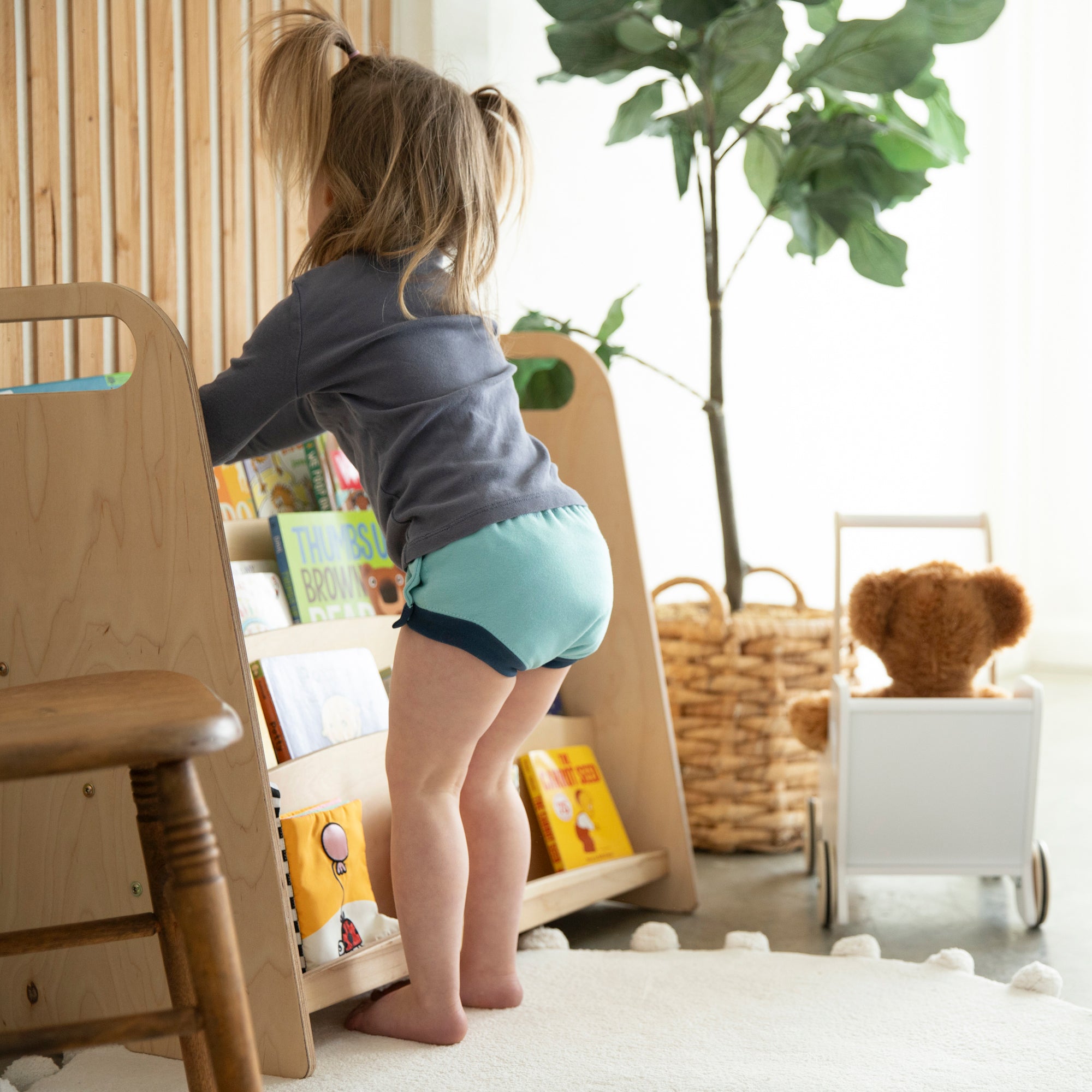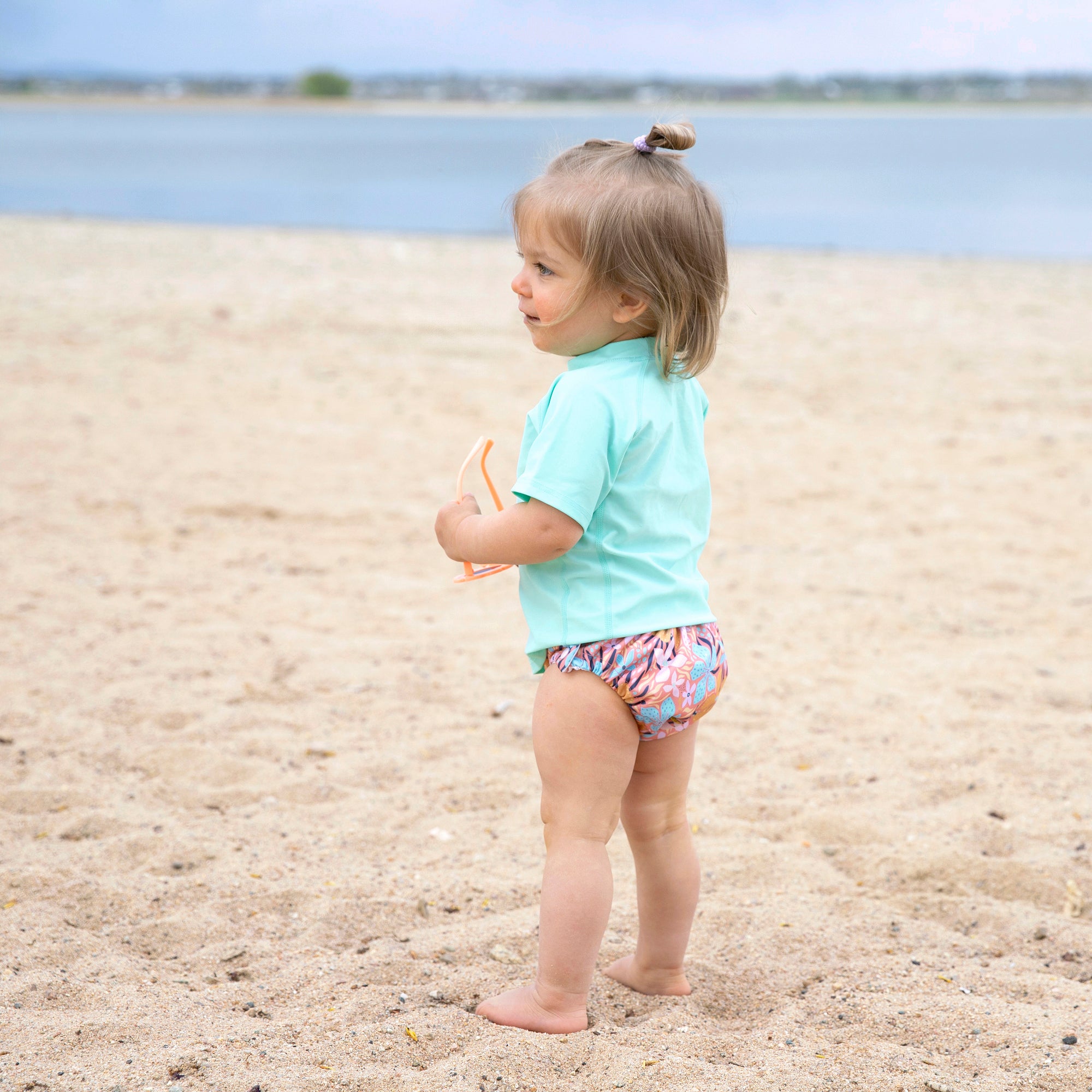
Fun fact: Sometimes, if you are having issues with your wash routine or using diaper rash creams unsafe for cloth diapers, your cloth diapers can get what we call build up. Build up is a concentration of either hard water minerals, leftover detergent or petroleum based diaper rash cream that causes your cloth diapers to smell badly or repel moisture. In this article, we're going to discuss how to deal with build up, what causes buildup and how to prevent build up in the future.
Let's start with the most common type of build up, hard water build up.
Hard Water Build Up
Hard water build up happens when the extra minerals in your water deposit onto your diapers, making them extremely hard to fully clean. As a result, your cloth diapers will start to smell and rashes can occur.
#ThirstiesTip It's worth it to note that diapers with hard water build up may smell clean right out of the dryer. However, you will notice the smell as soon as baby wets the diaper, usually referred to as stink or barnyard stink.
To treat diapers with hard water build up, you'll need either a packet of RLR or a GroVia Mighty Bubbles pod. Wash your diapers in hot water, using either the RLR or Mighty Bubbles to release the mineral deposits and help get your diapers back to smelling clean.
You may also consider doing a bleach wash immediately after your RLR or Mighty Bubbles treatment to sanitize your diapers. Use 1/4 c. bleach for HE machines or 1/2 c. for non-HE machines in a warm water wash to finish the stripping and sanitizing process.
To continue on cloth diapering without hard water build up, you'll want to add a capful of Calgon to your regular wash routine to help soften the water and prevent minerals from being deposited back onto your diapers.
Detergent Build Up
Detergent build up is somewhat the opposite of hard water build up, as it results from using too much detergent in softer water. Detergent build up is less likely than hard water build up, but it can and does happen. Detergent build up occurs when your diapers feel slimey out of your washer or create lots and lots of suds in your rinse cycle. There are however, a few ways that you can check to see if you have detergent build up and they are both very easy.
To check your detergent build up while your diapers are in the washer, open the lid mid rinse cycle and look at the water. Lots of suds and/or cloudy water mean detergent build up. If your machine does not allow you to open the door during a cycle, you can still check for detergent buildup. You'll need a bowl filled with water and a clean cloth diaper from your diaper collection.
Wet the cloth diaper and the absorbent pieces as much as possible and wring them out over the bowl. If the water looks murky or has soap suds sitting on the top, you have detergent build up. To get rid of detergent build up, you'll need to do a few hot washes with extra rinses until your diapers no longer suds when in clean water. Afterward, continue your routine as normal, but reduce the amount of detergent you're using while also considering switching to a powder detergent as they typically suds less than liquid.
Diaper Rash Cream Build Up

Although diaper rash cream is uncommon, these cases mostly stem from the use of petroleum jelly based diaper creams. Vaseline can also cause this build up, as well as several other Zinc based creams.
To prevent rash cream build up, use a cloth diaper safe ointment such as Thirsties Booty Love. If you must use another cream, remember to use either a fleece liner or a cloth wipe as a barrier to prevent your diapers from repelling.
To treat diaper rash cream build up, use hot water and blue dawn along with a scrub brush to scrub the surface of your diapers. This should help break up the petroleum and keep your diapers from repelling.
For more info on cloth diaper build up, checkout Jessica's latest Thirsties Live all about how to deal with build up in your cloth diapers!
Remember, you can shop Thirsties cloth diapers at your local retailer or online with Thirsties. For other cloth diaper tips and tricks, you can visit Thirsties on Facebook or join the online community, Thirsties Groupies. And don’t forget to checkout the Thirsties Instagram feed, @thirstiesinc.



